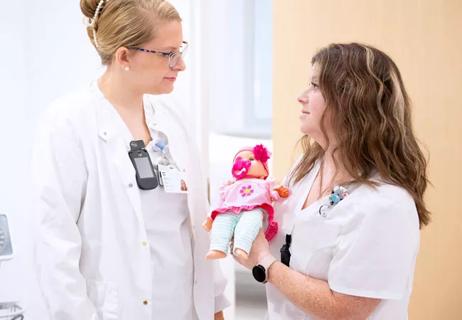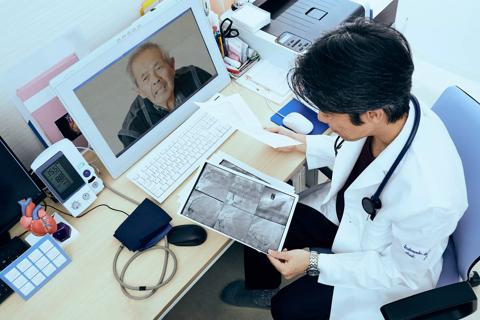Neuro Pathways podcast delivers expert perspectives on a perplexing disorder
When a condition goes from being referred to in the singular to the plural, you can be confident that understanding of the disease is evolving fast. That’s the case with what James Leverenz, MD, refers to as “the Lewy body dementias,” which comprise two main kinds of dementia with Lewy body pathology —one that starts with cognitive changes and one that starts with predominately motor changes.
Cleveland Clinic is a non-profit academic medical center. Advertising on our site helps support our mission. We do not endorse non-Cleveland Clinic products or services. Policy
As leader of the NIH-funded Dementia with Lewy Bodies Consortium, Dr. Leverenz is a world expert on the topic. He’s also Director of Cleveland Clinic Lou Ruvo Center for Brain Health in Cleveland. In a new episode of Cleveland Clinic’s Neuro Pathways podcast for healthcare professionals, Dr. Leverenz shares with host Alex Rae-Grant, MD, recent insights on the Lewy body dementias and how he approaches management of affected patients, including:
Click the player below to listen to the podcast now, or read on beneath the player for a short edited excerpt of the larger discussion, focusing on what triggers suspicion for a Lewy body dementia when Dr. Leverenz evaluates a patient. Check out more Neuro Pathways episodes at clevelandclinic.org/neuropodcast or wherever you get your podcasts.
Dr. Rae-Grant: You’ve seen a lot of these patients. What are some of the core things you hear from patients and families that gets you thinking Lewy body dementia may be at play?
Dr. Leverenz: Number one, I’ll watch them as they walk into the office. I used to work at the VA, and when I’d ask patients to walk for me, they’d do a military walk down the hall, but then as I saw them leaving, I’d see them stoop and shuffle. Whereas in the classic dementia with Lewy bodies — people who start with more of a cognitive change — walking changes will be more subtle. They won’t typically have an asymmetric resting tremor. They’ll just be a little stooped, a little slow, and that may come and go.
Also, these patients don’t typically have the memory loss that’s associated with Alzheimer’s. They tend to have more insight. Occasionally there are patients who bring themselves in and say, “Something’s not quite right. I’m struggling to keep up during the board meeting” or whatever.
And you have to ask about REM sleep behavior disorder — acting out one’s dreams — as it has been strongly linked to Lewy body changes in the brain. Usually this needs to be reported by a bed partner. Family members will often say, “Oh, I didn’t know that was important. But yeah, he yells, screams, falls out of bed. He hurt himself once.” That sort of thing. To document REM sleep disorder, you really need to have a sleep study.
And then you have to ask about hallucinations. I’ve been shocked at how many times I’ve asked somebody, “Do you ever see children, animals, animate objects?” And the patient will say, “Yeah, I do. I always see these little kids.” And the spouse will look at me and say, “He’s never told me that.” And the patient will say, “Well, it wasn’t bothering me, so I didn’t mention it.” Often these hallucinations are not frightening, at least not initially. Usually they involve small people or small animals. Sometimes the family will say, “We knew something was wrong when he said, ‘Set the table for those three people sitting in the corner.’” And many times, the patients will say, “I know it’s not real.” I had one person say, “Every morning I look out in the backyard and there’s a mariachi band out there, but I know there isn’t a mariachi band in my backyard.”

Pilot study confirms feasibility of conducting additional research on the novel treatment

Longer hospitalization does not mean a safer, faster recovery for patients age 70+

Structured data helps identify older adults at risk for poor outcomes, defines patients who require more comprehensive assessments

Self-administered tool can be completed in 10 minutes in waiting room

Social prescribing turns leisure activities into good “medicine”

A large geriatric study aims to find the answers

Analysis underscores how telehealth can help pinpoint elder abuse